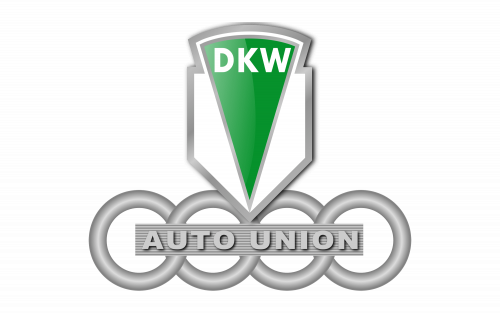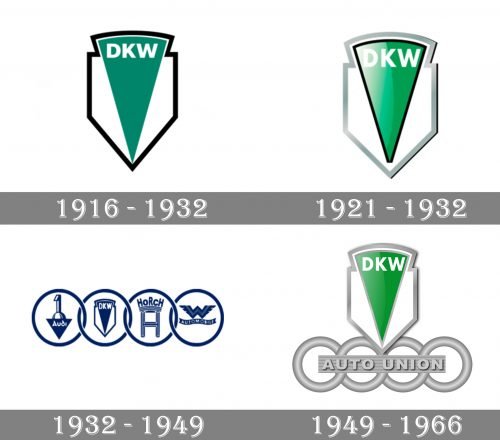DKW is the name of the German car manufacturing company, which was established in 1916 and became one of the companies, which formed the famous Auto Union in 1932. DKW specializes in the design and production of sedans and motorcycles.
Meaning and history
DKW was a motorcycle manufacturing company founded in Berlin in 1916 and called DKW, short for Deutsche Kraftfahrzeug Werke. However, fans of the brand deciphered the abbreviation as Das Kleine Wunder, which in German means “The Little Wonder”.
After realizing that DKW motorcycles had become very popular, company founder Jorgen Skaft Rasmussen decided to master the production of passenger cars. In 1928 the company produced its first car.
DKW F8-700 The true breakthrough of the company began in 1931. The concern launched production of newly designed models F1 and F2, which were front-wheel drive and had independent suspension.
After the commercial success of DKW, in 1932 its founder acquired three more automobile concerns. They included Audi, Wanderer, and Horch. This was followed by an establishment of an automaking group under the name Auto Union.
What is DKW?
DKW is the name of a historical car brand from Germany, which has many interpretations of its name. It can be deciphered in several ways, starting from “SteamPoweredCar” (DampfKraftWagen), and finishing with “TheLittleWonder” (DadKleineWunder). The brand manufactured small cats and motorcycles and ceased all operations in 1966.
1916 – 1932
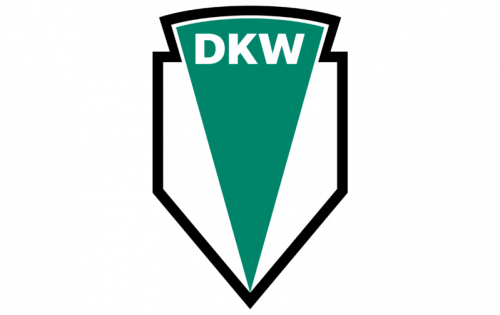
The DKW badge created in 1916 stayed with the brand for more than a decade and has never actually been replaced. The iconic badge remained untouched till the end of the brand’s history. It was a thin green triangle pointing down placed on a white background and enclosed into a black thick frame, with the upper line arched from the center, and the bottom — sharpened. The white “DKW” lettering was set on the bottom of the badge, on a green background, and executed in a bold and modern sans-serif typeface.
1921 – 1932
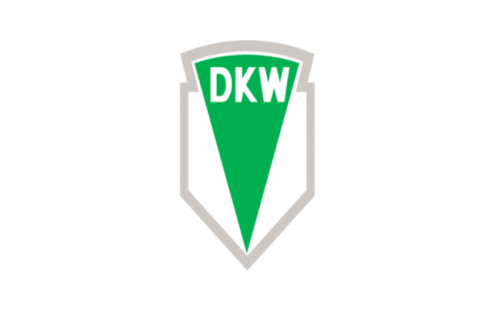
In 1921 the logo was refined and modernized. Though the concept and color palette remained untouched, some gloss and gradients were added to the emblem, and the black framing switched to silver gray. Another changed was inside the crest — the grass green triangle gained a thin black outline.
1932 – 1949
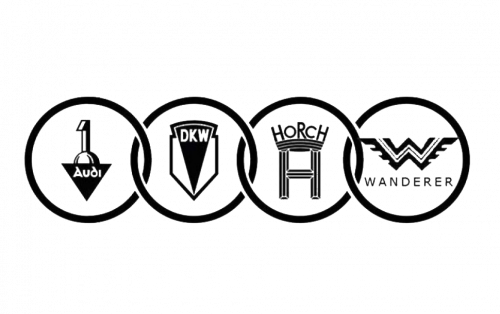
In 1932 the logo used by the brand featured a famous four rings concept when the four major German brands merged to form Auto Union. It was a blue and white logo, where the emblem of each marque was placed inside a separate ring. This, there was the Audi ring, DKW ring, Horch, and Wanderer rings.
1949 – 1966
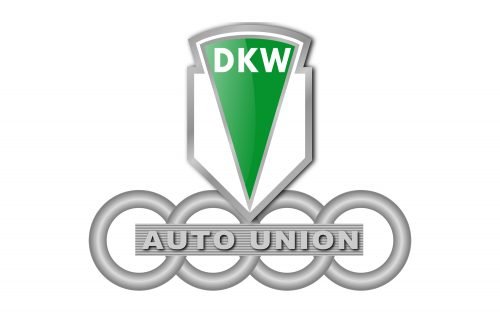
In 1949 the brand starts using its stylish green and silver badge again. It was the same emblem as in 1921, but with the black triangular outline replaced with a silver-gray one. The DKW crest was placed above the silver Auto Union badge, with four silver rings and a horizontal banner with the lettering coming through the middle of the composition.
Font and Color
The laconic uppercase lettering from the historical badge of DKW was set in a massive geometric sans-serif typeface with the capital letters perfectly balanced, their contours clean and distinctive, and the ends of the bars cut straight. The closest fonts to the one, used in the DKW insignia, are, probably, Neuzeit Grotesk Black, Point Panther Regular, or Clarika Pro Geometric Heavy.
As for the color palette of the DKW visual identity, it is set in a combination of green, gray, and white, a very fresh and lively scheme, which made the logo of the company stand out in the list of its competitors. Green is the color of progress and development, while white is all about transparency and trustworthiness, and gray works as a balancing shade, adding a touch of confidence and professionalism.


